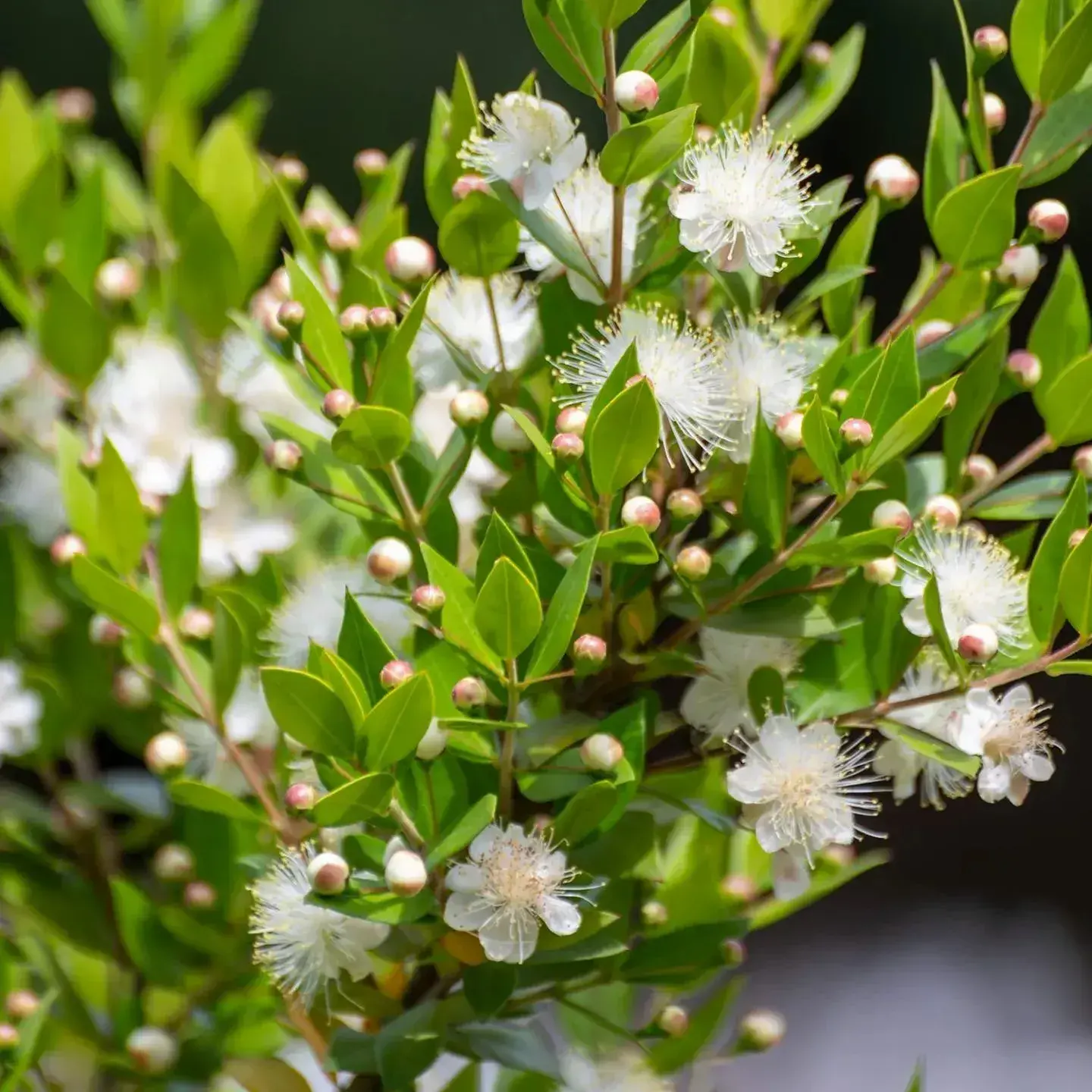
Common myrtle (Myrtus communis)
Common myrtle, also known as Roman Myrtle, Bride's Myrtle, Sweet Roman Myrtle, True myrtle, Myrtle
Common myrtle (Myrtus communis) is an evergreen shrub indigenous to the Mediterranean regions of Europe, Africa, and Asia. Valued for its appealing look, manageable growth rate, and low maintenance, it is frequently grown in gardens.
**Characteristics:**
- **Leaves:** Shiny, aromatic, lanceolate.
- **Flowers:** White or pale pink, fragrant, with multiple stamens.
- **Berries:** Dark blue to black, edible but slightly bitter.
- **Growth:** Dense, bushy, slow to moderate growth.
**Uses:**
- **Culinary:** Leaves and berries are used to infuse flavors into drinks and dishes.
- **Ornamental:** Widely used in landscaping for hedges and aesthetic appeal.
- **Medicinal:** Traditionally utilized for its potential antiseptic and anti-inflammatory benefits.
- **Cultural:** Integral to various cultural rituals, including Jewish festival traditions.
Overall, common myrtle is cherished for its beauty, fragrance, and versatility in culinary, ornamental, medicinal, and cultural contexts.